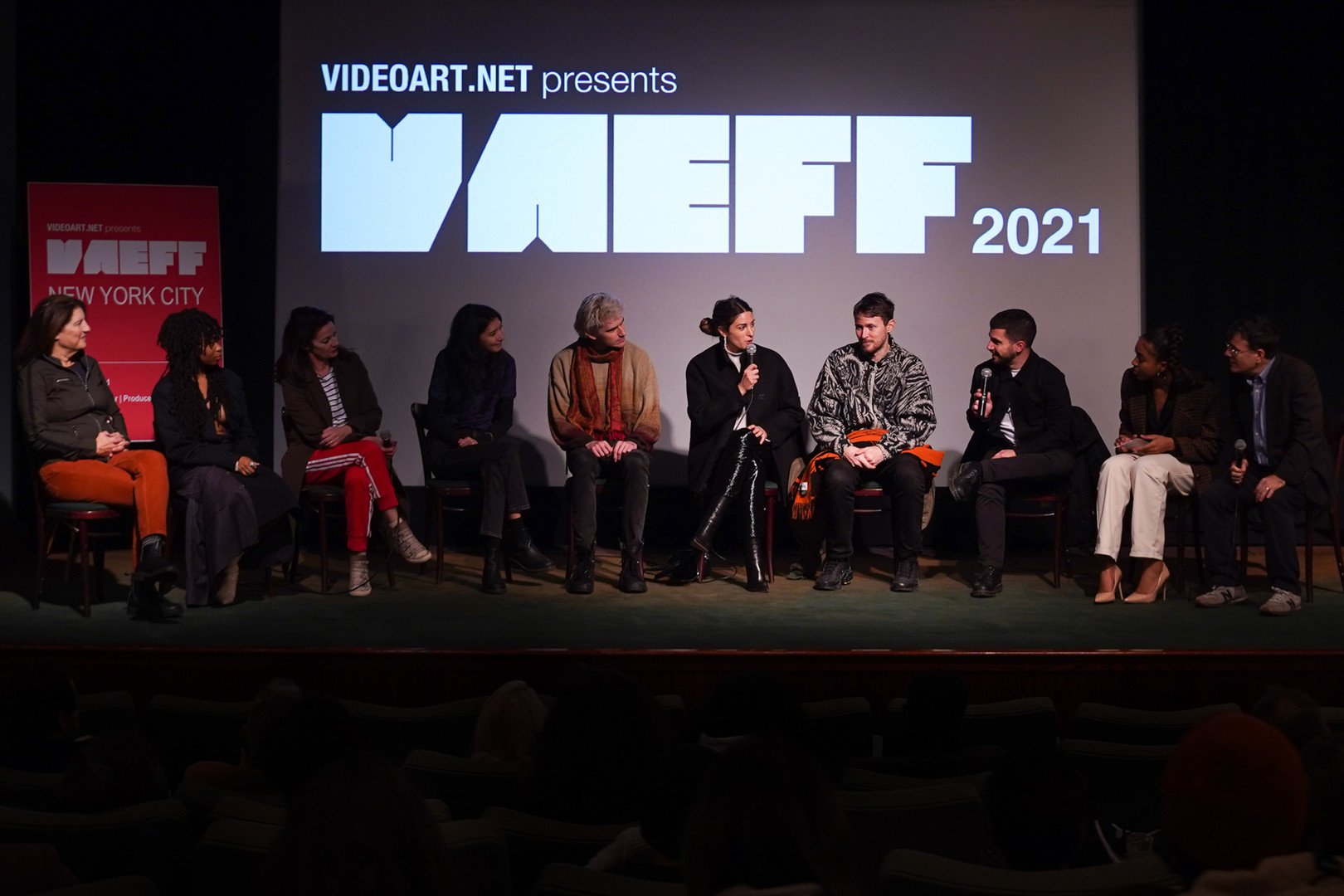Video Art & Experimental Film Festival
In conversation with Dan Fine
Director and Chief Curator of Video Art & Experimental Film Festival and Curation Hour network member
VAEFF 2010 opening at Tribeca Cinemas: VAEFF founder and director Dan Fine, and former director of Vimeo Blake Whitman.
The Video Art & Experimental Film Festival is getting ready for its 12th edition, starting tomorrow at the Tribeca Film Center in New York. The festival showcases some of the most innovative, provocative, and exciting works across video art, music, dance, and fashion films, visual narratives.
We are very honoured to have Director and Chief Curator Dan Fine as part of the Curation Hour network. To celebrate the beginning of the festival’s new edition, we’d like share a conversation we had with Fine a while back, during which we learnt about his creative journey, his curatorial approach and what’s next for his event.
You founded VAEFF in 2010. Can you share with us what your journey has been like and what has led you to create this platform?
I began my career in the 90s directing video installations and performances. I always had a particular interest in the cutting edge of technology and innovation, and enjoyed finding fresh ways to express myself and connect with others. In 2005, when online video publishing was still in its very early stages, I saw an opportunity to create videoart.net as a platform for independent artists around the world to share their work, interact, and gain inspiration from one another at a scale which had not been possible before.
The online experience however did not feel sufficient for me, so in 2010, with the sponsorship of Vimeo, I founded the Video Art & Experimental Film Festival, which debuted at Tribeca Cinemas. I saw VAEFF as a way to connect some of the most exciting, inventive, and inspiring artists from around the world, and create an event where people are able to come together to experience and discuss works which too often in today’s world are only seen in the realm of the internet.
Emotional State of Techno - Directed by Stini Röhrs. Part of the Beauty, Sex & Shame programme at VAEFF 2022.
Your curation includes fashion films, music video, animation, dance film and visual narrative content. Why did you decide to focus on these genres?
VAEFF has always accepted a wide variety of genres and themes as long as they exhibit visual innovation and fresh ideas. In recent years I have been particularly taken by the renaissance of music, dance, and fashion film. These genres are home to some of the most exciting innovation and experimentation in the independent film world, and I have come to believe that they are today’s avant-garde.
In 2017, Niccolò Montanari, founder of Berlin Fashion Film Festival, joined us as a yearly guest curator for special programs focusing on the intersections between fashion, dance, and music. I think a selection that perfectly exemplified this intersection of genres was one of 2018’s most discussed videos Am I Paris ? directed by Redha Medjellekh, a French choreography film set to Prokofiev’s Dance of the Knights featuring Scorpion Dancer wearing a costume designed by avant-garde fashion artist Charlie le Mindu.
Redha Medjellekh creator of Am I Paris? speaking at the VAEFF 2018 panel discussion.
What do you look for when selecting content for your yearly film programme?
It is very important for us to select work that reflects the cutting edge of the contemporary art, film, and fashion worlds. Over the last twelve years we have continued to improve our curation system to find some of the most bold, original, innovative, and substantive film and video produced in the past year. We overall look for a wide range of themes, topics, and genres, and once we’ve decided on the final lineup we curate them into a variety of focused programs such as Beauty, Sex, & Shame, Color, Movement & Space, On the Edge and more.
Attending Artist Panel for VAEFF Kick-Off 2021 at Tribeca Film Center.
Can you share with us some of your favorite works from across the editions of VAEFF?
It is of course impossible to narrow it down since there were so many amazing works over the years. What I will say is that I felt that last year’s artist panel discussion during the festival kickoff was a true embodiment of VAEFF’s spirit. It consisted of Ready to Wear director/star Michelle Gomez, Trike writer/star Brianna Mims, Room with a View directors (LA)HORDE, and A Woman Eats Director Sam Reiss and Writer/star Frances Li. These artists ranged widely in backgrounds (Gomez, for example, an established figure in the film industry, and Reiss a young budding director), originating from many different countries (Scotland, France, and the U.S), with works spanning vastly different genres and styles (Room with a View a maximalist dance ensemble film, A Woman Eats a quiet narrative character study, Ready to Wear a comedic satire, and Trike an abstract bodily-driven visual metaphor).
Where do you think we are heading with video content?
I think with today’s increasing diversification of video platforms combined with rapidly evolving technologies, the development of video production is going in many different directions at once — short form, VR, episodic, etc. — and it’s an exciting time to be a filmmaker. While it’s impossible to predict what the most popular content will be a decade from now, what does seem clear to me is that making videos and reaching audiences is only becoming more and more accessible and feasible as the years go by. The barriers to entry are rapidly decreasing, and that can only lead to more creativity and a wider range of voices.
What's next for VAEFF?
We are very excited about the future of VAEFF, and are looking forward to continue growing the festival and reaching wider audiences. I would love in the future to begin incorporating more mediums into the festival such as virtual and augmented reality projects.



